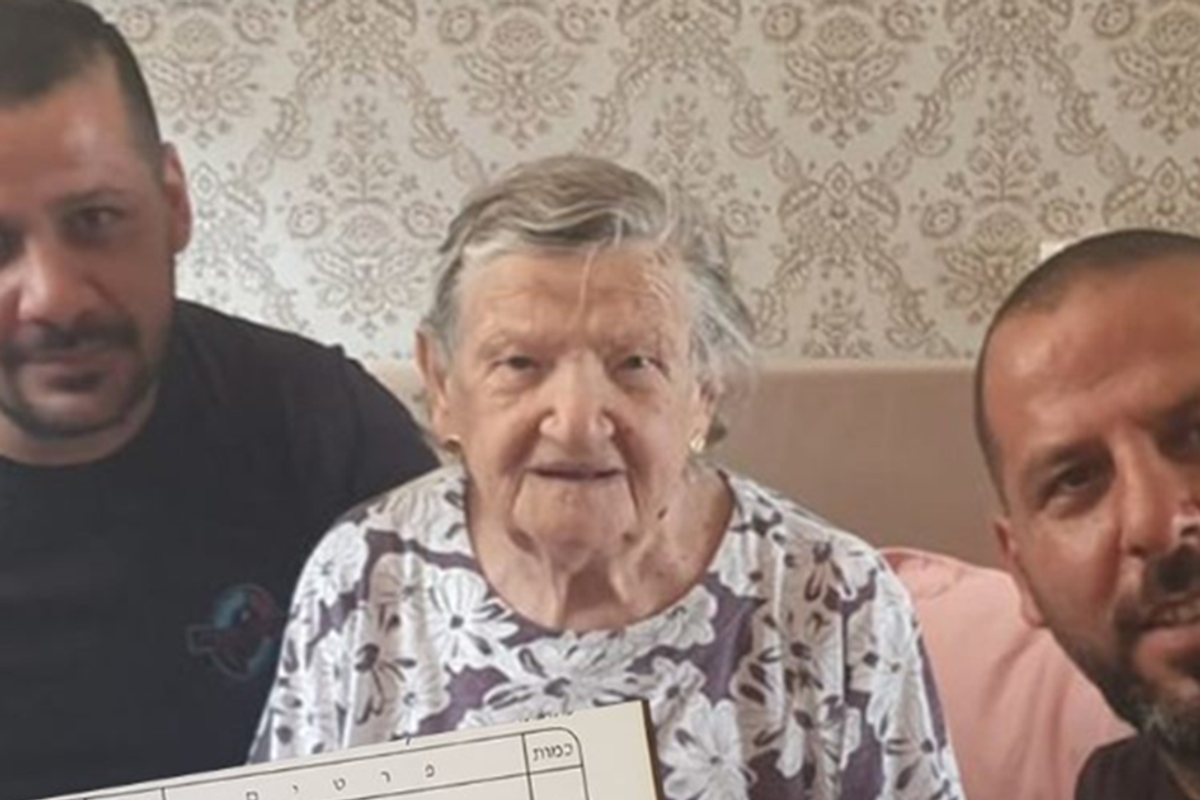15 times politicians did the right thing in 2015.
You may not always agree with these politicians, but let's give credit where credit is due.
2015 has been a big year in a lot of ways.
The Supreme Court ruled on marriage equality and upheld the Affordable Care Act. The people of Ireland became the first country to grant the right to same-sex marriage by popular vote. There have been lots of good political things happening behind the scenes, but how about a few examples of positive things politicians did throughout the year?
1. World leaders came together and signed on to a historic climate change agreement.
Earlier in December, world leaders met in Paris to address an issue vital to the Earth's survival: climate change. And for once, the politicians in attendance got real about the need and urgency to take immediate action.
In the end, 195 countries signed on to the Paris Agreement, agreeing to reduce their carbon output as soon as possible in an effort to keep the planet from warming more than 2 degrees. It's not just good for the environment — the agreement took care to protect human rights as well.
A protester outside the COP21 talks. Photo by Francois Guillot/AFP/Getty Images.
2. Oregon's legislature took on some major issues, from police profiling to paid sick leave.
In 2015, Oregon banned police profiling, required body cameras on officers, criminalized revenge porn, passed a law requiring paid sick leave, and instituted automatic voter registration which will up the number of registered voters in the state by an estimated 800,000 people, among other achievements.
Oregon Gov. Kate Brown. Photo by Scott Olson/Getty Images.
3. A bipartisan bill put animal welfare ahead of profits.
Back in February, Representatives Earl Blumenauer and Mike Fitzpatrick introduced the Animal Welfare At Risk in Experiments (AWARE) Act. The bill would close a loophole that exempts farm animals from bans on animal testing. Though the bipartisan bill hasn't gotten much traction, it's a bold stand from these politicians against the powerful agriculture industry.
Photo by David McNew/Getty Images.
“Allowing animals to be tortured in the interest of creating bigger profit margins — especially at taxpayer expense — is reprehensible, and we’re grateful to Representatives Blumenauer and Fitzpatrick for working hard to get USDA out of the business of animal cruelty and back to the job of animal welfare,” said Matt Bershadker, president and CEO of the American Society for the Prevention of Cruelty to Animals (ASPCA) said of the bill.
“Congress’s swift bipartisan introduction of legislation reflects a strong commitment to ending animal cruelty wherever it happens.”
4. Hawaii Governor David Ige committed his state to using 100% renewable energy by 2045.
In June, Gov. Ige committed Hawaii to achieving the goal of 100% renewable power by the year 2045. In August, Hawaii opened the first fully closed-cycle Ocean Thermal Energy Conversion plant in the U.S. (That's a big deal.)
Photo by Kevork Djansezian/Getty Images.
Hawaii isn't exactly chock-full of fossil fuels in the first place, so the swap to renewable energy is not only welcome, but necessary. Here's hoping some of the technology working its way out to the islands finds its way back to the mainland.
5. Lawmakers created Congress' first ever transgender equality task force.
Earlier this year, Rep. Mike Honda announced that he has a transgender granddaughter. Ever since, he's been a powerful, vocal ally to the trans cause, giving voice to the frequently voiceless. Honda now chairs the House of Representatives' first ever Transgender Equality Task Force.
"This is another much-needed step in our fight to ensure that the transgender community’s voice is represented in Congress,” Honda says in a statement on his website.
Rep. Mike Honda. Photo by Chip Somodevilla/Getty Images.
6. Canada Prime Minister Justin Trudeau unveiled a gender-balanced cabinet.
It may not seem like a big deal, and that's kind of the point. When a reporter asked Trudeau why his cabinet is equally balanced between men and women, he gave the perfect answer: "Because it's 2015."
"Because it's 2015." ¯\\_(ツ)_/¯
"It's an incredible pleasure for me to be before you today … to present a cabinet that looks like Canada," Trudeau said, noting a more gender and racially diverse cabinet than previous administrations.
7. A "pro-gun" lawmaker quit the NRA after the attacks in San Bernardino.
John Oceguera, the former Nevada Assembly Speaker, resigned his membership to the NRA following the attacks in San Bernardino. Oceguera, who is running for Congress, simply had it with the pro-gun lobby, pointing to its unwillingness to close dangerous loopholes. A gun-owner himself, Oceguera has become outspoken in his position of ensuring guns are only acquired after thorough background checks.
"Our country is facing a tragic gun violence epidemic, and we cannot ignore it," wrote Oceguera about his resignation. "Still, the NRA opposes any legislation that would help keep guns out of the hands of terrorists, criminals and the mentally ill, and spends millions to stop any action in Congress that could help prevent further violence. I cannot continue to be a member while the NRA refuses to back closing these loopholes."
Police in San Bernardino block off the crime scene at the Inland Regional Center where 14 people were killed. Photo by Joe Raedle/Getty Images.
8. Outgoing Kentucky Governor Steve Beshear restored voting rights for nonviolent ex-felons.
In his final executive order as governor of Kentucky, Steve Beshear took it upon himself to automatically reinstate the voting rights of nonviolent convicted felons who have served out their prison term.
Gov. Steve Beshear. Photo by Jim Watson/AFP/Getty Images.
"This disenfranchisement makes no sense," said Beshear during a press conference. "It makes no sense because it dilutes the energy of democracy, which functions only if all classes and categories of people have a voice, not just a privileged, powerful few. It makes no sense because it defeats a primary goal of our corrections system, which is to rehabilitate those who have committed crimes."
9. An Ohio state representative opened up about her rape and abortion.
During debate on a bill that would effectively ban abortion in the state of Ohio, Rep. Teresa Fedor shared a personal story in hopes of providing some important context to the effect such a bill would have on the women of the state.
Photo by TIM SLOAN/AFP/Getty Images.
"You don't respect my reason, my rape, my abortion, and I guarantee you there are other women who should stand up with me and be courageous enough to speak that voice," said Rep. Fedor, opening up about being raped during her time in the military and her decision to have an abortion. "What you're doing is so fundamentally inhuman, unconstitutional, and I've sat here too long."
The bill passed the House but hasn't been taken up by the Senate.
10. Science prevailed during the GOP undercard debate.
During an October debate, GOP presidential hopefuls George Pataki and Lindsey Graham did something that really shouldn't be considered controversial, but given the positions of some of the other candidates, it was. They stood up for science.
"I've talked to climatologists of the world, and 90% of them are telling me that greenhouse gas effect is real," Sen. Lindsey Graham said. "That we're heating up the planet. I just want a solution that would be good for the economy, that doesn't destroy it."
Sen. Lindsey Graham, of South Carolina. Photo by Alex Wong/Getty Images.
"Too often we question science that everyone accepts," said Pataki. "I mean, it's ridiculous that, in the 21st century, we're questioning whether or not vaccines are the appropriate way to go. Of course they are. And it's also not appropriate to think that human activity, putting CO2 into the atmosphere, doesn't make the Earth warmer. All things being equal, it does. It's uncontroverted."
11. President Obama "banned the box."
In November, President Obama issued an executive order instructing the federal government to remove questions about whether one has a criminal record. Why? Well, for many employers, a "yes" answer gets applications tossed in the rejection bin.
By removing that question from applications, candidates can be evaluated on the basis of their skills and not on the basis of some potentially long ago transgression. Employers can — and likely will — continue running pre-employment background checks that will turn up convictions. Banning the box gives those convicted of a crime the chance to make a first impression before their record does.
Photo by Saul Loeb-Pool/Getty Images.
12. South Carolina removed the Confederate flag from its post outside the state house.
In July, Republican South Carolina Governor Nikki Haley signed a bill ordering the removal of the Confederate flag from outside the state house. In signing the bill, she used nine pens, one for each victim of the June attack on Charleston's Emanuel African Methodist Episcopal Church.
"This is a story about the history of South Carolina and how the action of nine individuals laid out this long chain of events that forever showed the state of South Carolina what love and forgiveness looks like," Gov. Haley said at the signing ceremony.
Photo by Mladen Antonov/AFP/Getty Images.
Other cities and states are considering similar action — Houston is in the process of renaming schools that honor confederate soldiers; Fairfax County, Virginia, is considering the same; and a Florida town recently renamed a Confederate-inspired highway after President Obama.
13. Germany's Chancellor Merkel showed, and continues to show, leadership on the refugee front.
In December, Time magazine named German Chancellor Angela Merkel Person of the Year. Why? In large part, because the country has taken on more than 1 million refugees in 2015 alone. In comparison, the U.S. averages around 70,000 refugees taken in each year.
"Germany is doing what is morally and legally obliged [to do for refugees]. Not more, and not less," Merkel said in September. Perhaps other countries (like, oh, perhaps the U.S.) could take a cue from Germany's humanitarian efforts.
Angela Merkel. Photo by Sean Gallup/Getty Images.
14. Rand Paul filibustered the Patriot Act renewal.
No one really likes the Patriot Act. Or, rather, few would offer major public support for it. The whole thing basically gives the federal government the ability to spy on American citizens. And while most lawmakers are quick to claim it's needed in order to keep us safe from the threat of terrorism, the public is, at best, split on the matter.
In May, Kentucky Senator Rand Paul carried out a nearly 11-hour filibuster calling for the expiration of a number of key Patriot Act provisions, specifically having to do with government surveillance of phone records.
Photo by Chip Somodevilla/Getty Images.
In the end, the bill passed, but not before Sen. Paul brought it to the attention of the American people, and that's certainly something worth noting.
15. China lifted its one-child rule.
China put an end to its controversial "one-child rule." The rule, instituted in 1979, prevented an estimated 400 million births across the country. But as the country's population ages, the Communist Party has issued a statement allowing couples to now have up to two children. While this sounds like just a tiny step forward on a hugely controversial issue, it's a giant leap in terms of phasing out a regressive policy.
Under the one-child rule, for every 100 girls born in China, 120 boys are born, a higher ratio than any other country in the world.
Photo by China Photos/Getty Images.
You may not always agree with a politician, but it's good to give credit where credit is due.
Maybe you disagree with Rand Paul's economic worldview, or maybe you think President Obama's foreign policy is too hawkish. Even so, you can (and should) acknowledge good work when it's done, regardless of political party. It's easy to paint the world as being inhabited by people who are either 100% pure good or 100% pure evil, but it's simply not that simple.
It's about credit where credit is due and understanding that there's always a bit more nuance than we'd like to admit.



 TikTok · Ale
TikTok · Ale

 Phone charging.
Phone charging. bill nye chemistry GIF by NETFLIX
bill nye chemistry GIF by NETFLIX 

 Autumn created this piece when she was just 5 years old.Autumn de Forest
Autumn created this piece when she was just 5 years old.Autumn de Forest  Autumn de Forest paints Autumn de Forest
Autumn de Forest paints Autumn de Forest  An Autumn de Forest paintingAutumn de Forest
An Autumn de Forest paintingAutumn de Forest 
 Autumn de Forest stands with the Pope who looks at one of her paintings Autumn de Forest
Autumn de Forest stands with the Pope who looks at one of her paintings Autumn de Forest 
 The Memorial to the Murdered Jews of EuropeBy Alexander Blum - Own work, CC BY-SA 4.0
The Memorial to the Murdered Jews of EuropeBy Alexander Blum - Own work, CC BY-SA 4.0 Move over, Mario Brothers.
Move over, Mario Brothers. 